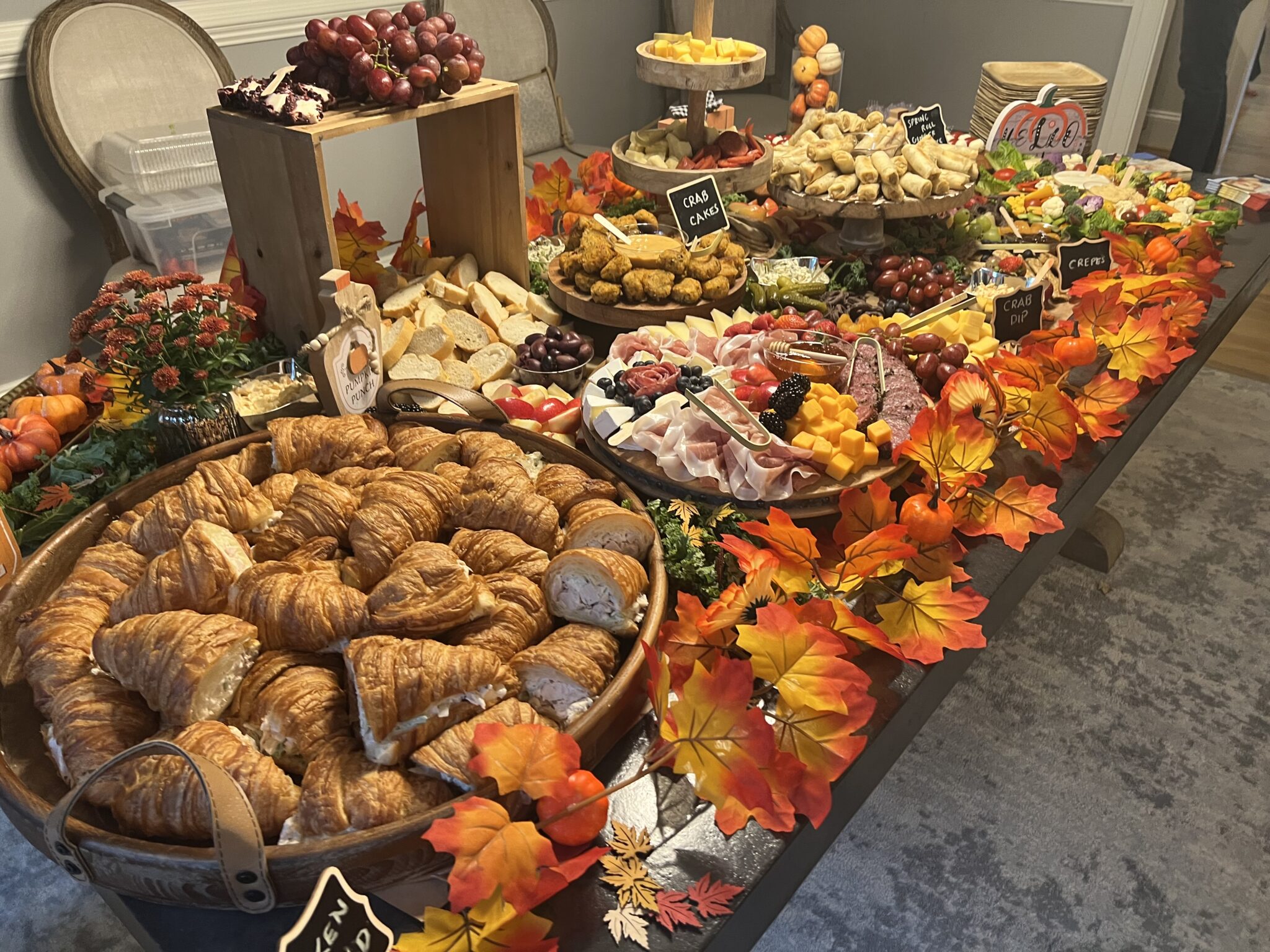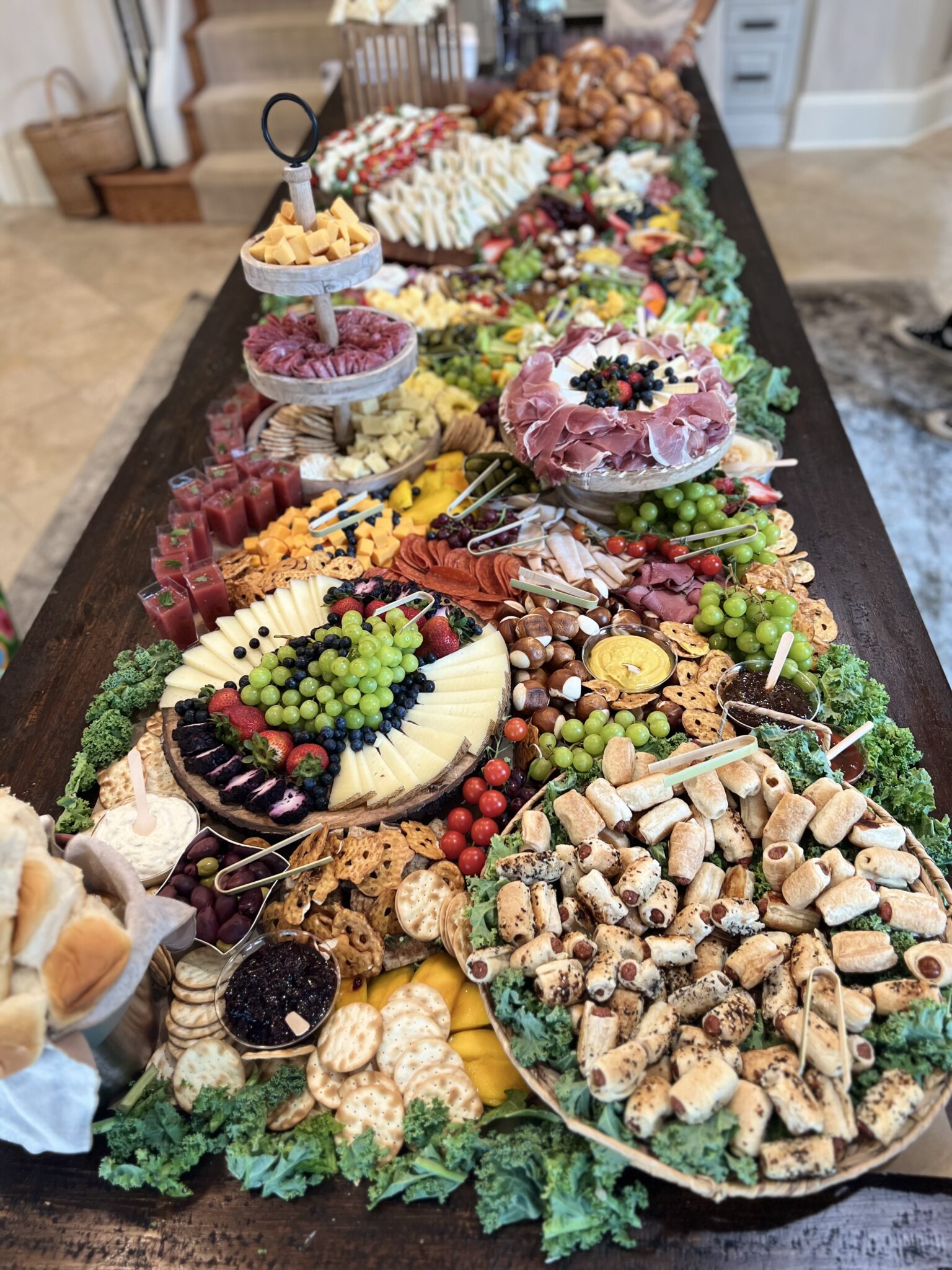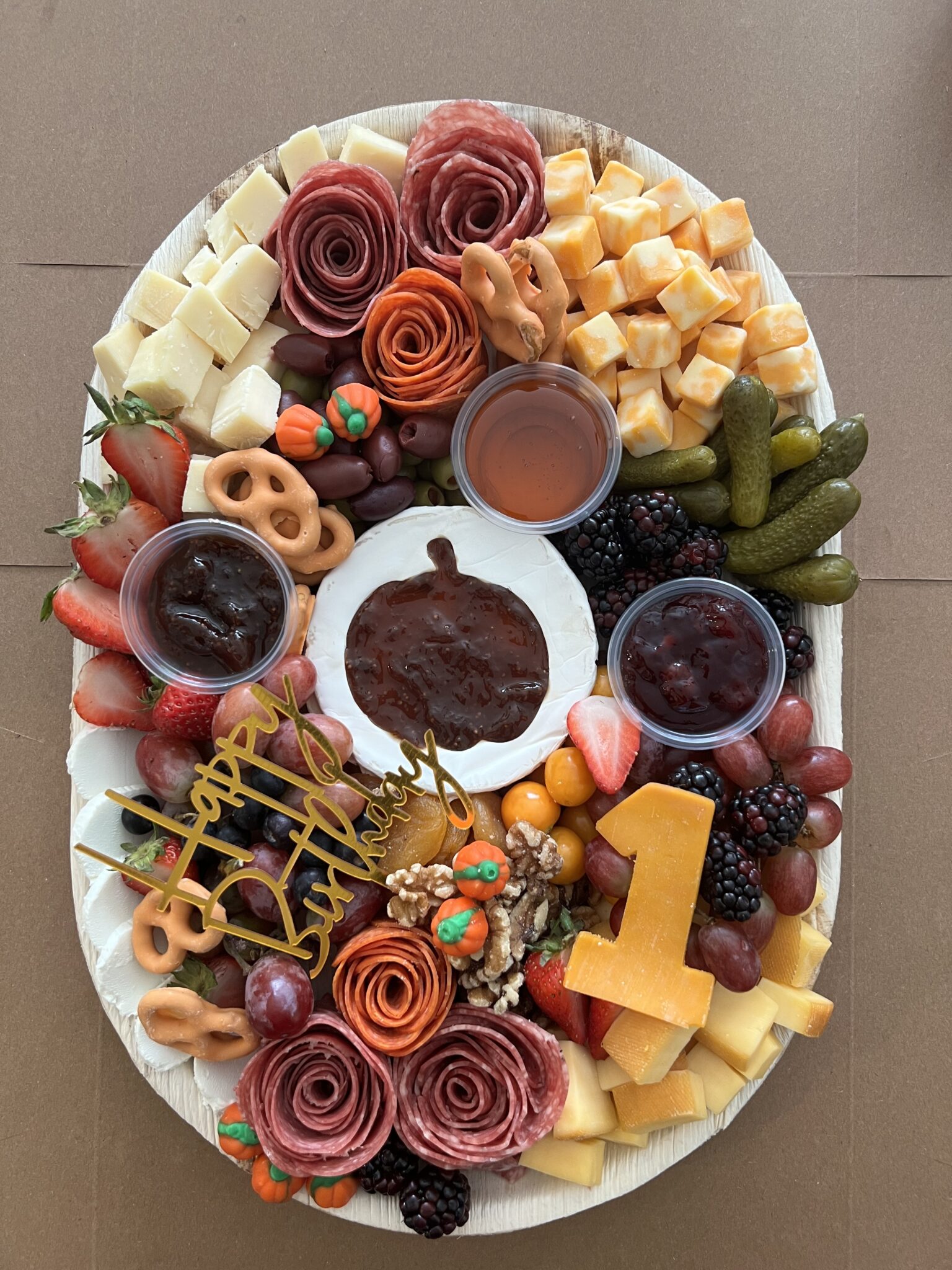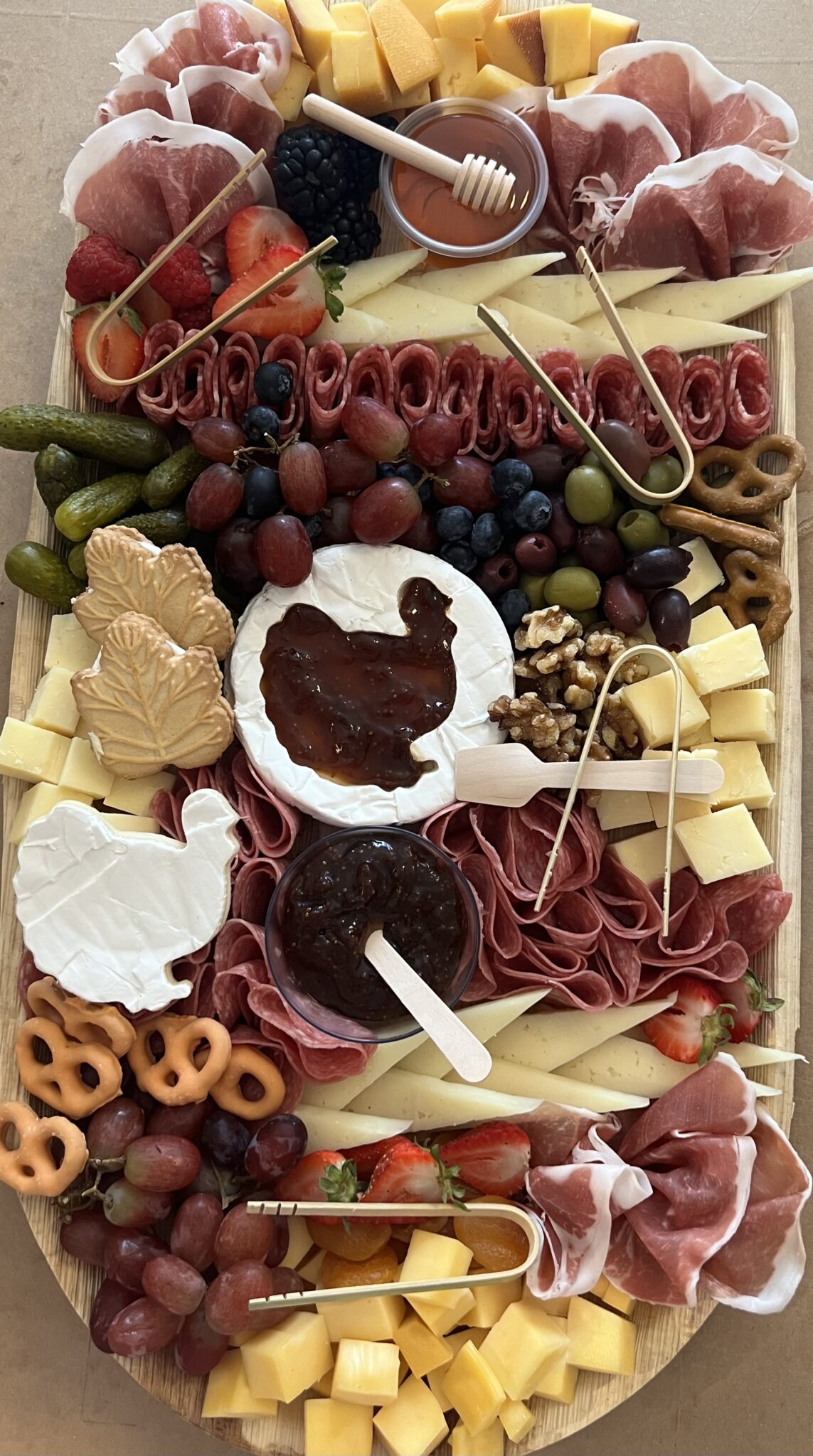Teenage Charcuterie Queens Tap Into the Graze Craze

Alexandria, VA – Jena and Kermina Ramzy know how to put some Cha-Cha-Cha and good times into charcuterie boards! As siblings and teenage entrepreneurs, the high schoolers who call themselves the Charcuterie Queens also hear the cha-cha-ching of a very successful first full year of catering to the masses.
With the catchy and memorable name of The Charcuterie Queens (they named themselves a year ago this fall, with their parents’ approval), the budding entrepreneurs spend much of every weekend and some weeknights arranging and delivering an expanding variety of charcuterie boards that span every conceivable occasion, seasonal celebration, and other personal entertaining requests of their customers.
Social media has been a richly rewarding source of clientele. Tapping into the energy of the 22,000-member Alexandria Dining Facebook Group, the Charcuterie Queens routinely post inviting spreads that are mouth-watering and tantalizing. Orders continually come in based on their creative displays that garner between 3,000 and 7,000 views per post.
Each choice of charcuterie board created by the Ramzy sisters is “built” at the client’s home on CQ’s bamboo board, with the agreed-upon selection of specialty cheeses, garnishes, meats, desserts, and vegetable spreads—literally every single one is made on-site to order.

Although young, these entrepreneurs understand the strict guidelines for boards for Hallal, Kosher, vegans, vegetarians, and others, and they comply with their clients’ requirements. One of the benefits of setting up most charcuterie boards on-site is that clients can see the careful selections for the tray before it is laid out on a board that fits the size of the order.
Among the secrets of a beautiful charcuterie board, they say, is not making everything look crowded. “We want something vibrant when we set up our boards,” said Jena, adding they attempt to avoid a “choppy” look by practicing patience with the actual arrangement and creation of vegetable shapes and salami flowers. Setting up a board well typically requires 30-45 minutes on site, she said, with Kermina nodding, and some detailed arrangements are more time-consuming.
After a pause and practically in unison, Kermina added, “We want it to be just bright, inviting, and cohesive!”
“Yes, cohesive!” agreed Jena. “From the details provided of the event, we can piece together what they’re looking for. Party planning is flexible, so we keep communicating with them to add or change elements as the customer requests.”
The minimum advance time is two weeks, but the sisters highly recommend ordering a month in advance if possible. Some people love to plan way in advance, and Jena noted that lead time gives the catering sisters more time to consult with the client and build something truly original.

In addition to the familiar spreads of charcuterie choices, the Charcuterie Queens offer finger foods that have become popular, including crab cakes, chicken salad croissant sandwiches, spring rolls made with filo dough, and their own from scratch hot dog bites, which they admit are “really delicious.” And the girls say they may add some Eqyptian fare to their menu one day. Unlike the charcuterie boards, which are assembled at the client’s home most of the time, the finger foods are a definite “in advance” preparation, along with the salami flowers, which are also time-consuming.
Reflecting on lessons learned while operating their business, the sisters came across as mature beyond their years and unusually knowledgeable about food and preparation. Kermina is 15, a sophomore, and taller; Jena is 17 and a senior applying to local colleges because she wants to stay close to home to keep running her business. When asked what advice they would share with other teen entrepreneurs, they said they’ve learned flexibility and time management.
“It isn’t as easy as it looks,” Kermina said. “It takes a lot of patience when preparing the boards.” “Commitment is a huge part,” Jena said. “You can’t go around and choose what order you want. Every one of them matters.”
“And you have to balance your social life and school life” Kermina added. “Sometimes I can’t go out with friends. I have to make it work. Sometimes, we (herself and Jena) have to juggle who has to do the boards so she can go out with her friends and I can go out with mine. We get to manage our own time. We’re our own bosses.”

“It takes self-control,” Jena noted, attributing that to the business’s success. “It’s “Wow! Right now, we are looking at places to work out of due to the need for space. It is astonishing to me how far we’ve gotten.
“It shows if you put in dedication to something and sacrifice, it really pays off in the end,” she added, with a “Definitely” coming from her sister.
With the holiday season nearly in full swing, the Charcuterie Queens expect to meet the growing demand with the most discipline and attentive scheduling they’ve ever faced. These creative caterers are up to the task, however. In addition to the commitment and independence demonstrated over the past year, another dominant influence in their success is that their parents are in the food industry, with their mother running Julie’s Cookies and their father operating a street food truck. They have shown their daughters some of the ropes and instilled a cultural love of food.



This family of chefs operates their respective food businesses from their licensed food truck and home kitchen. Cold storage in their parents’ commercial refrigerated units is a primary benefit of having parents who know the ropes of food service. Another advantage is that their parents drive to most of the destinations in the region with them, although Jena has her driver’s license and Kermina is studying for her permit now.
To reach out or follow the Charcuterie Queens, find them on Facebook and Instagram.
SIDEBAR 1
How To Make a Salami Rose
A salami rose or two usually stars on a CQ board, and are the rage of all the charcuterie boards these days, so adding one or two to yours might be just the wow factor you need.
Prep Time:
5 minutes
Italian or Genoa Salami (about 14 slices for a small rose) thinly sliced.
Instructions:
Use a Wine Glass!!
First fold a salami piece over the edge of the wine glass. You will have half of the salami inside the glass and half folded over the outside. Start layering the salami about 1/4 inch over each seam. Fold slices of salami over the entire rim of the glass in an overlapping fashion. Press down slightly on the salami along the rim and side of glass. Continue to layer the salami over each seam until the hole in the center starts to close. Continue to overlap the salami by placing it in the middle of the previous piece.
Repeat the folding process with more salami slices, until you’ve filled the glass. There should be no space visible in the middle; the center of the salami rose should have a point resembling a tight rosebud. The more salami you use, the fuller the rose. Holding the rose in place, turn the glass upside down onto the board to deposit the salami rose where you’d like it to sit on your board. Carefully remove the glass.
Add the salami roses last and wedge them in amidst the other board components to help them hold their shape.*
*Editor’s Note: We also recommend searching You Tube for instructional videos.
Meet the Charcuterie Queens

Meet Jena
In the photo above, Jena Ramzy is the confident, young caterer on the right, supporting a platter with a Christmas food tree decorated with edibles and topped with a cheese star that appears to glow—or maybe that’s just a reflection of the pride this 17-year-old has in her business skills. Rightfully so. Jena may only be a senior in high school, but she has already established a specialty catering niche of charcuterie and party boards with her sister, who is also a serious foodie.
Among the highlight experiences of their first year of business, according to Jena, is the repeat customer from Falls Church who always welcomes them as friends when the teens arrive to set up the table with their stunning charcuterie creations. That customer is both of our favorites—she’s so welcoming when we arrive with our boxes, offers us a bottle of water while we’re working, and always pays in full when she orders, Jena explained.
When asked which charcuterie boards she most enjoys preparing, Jena selects the Halloween and Christmas boards and platters. “They’re just so colorful and festive,” she laughs. “We do this little thing with the brie that makes it look like Santa Claus—it’s just so cute!”
Meet Kermina
In the same photo above, Kermina Ramzy, 15, is on the left, and, in spite of her age, is as self-assured and articulate as her older sister Jena. Kermina was only a high school freshman when she and her sister were looking for employment, but they both share a commitment to the business and, importantly, attentive scheduling. Both sisters enjoy entertaining along with food design and preparation as shared interests—along with an ability to work together. A couple of months ago, the siblings celebrated their first year in business—but not by not taking the weekend off! Like party-planning and ordering online for customers, finding time to spend with high friends is something the high schoolers say must be done in advance around their scheduled delivery appointments. “We work it out,” she said, adding that it “can be done.”
When asked what her highlight experience has been, Kermina also selected the Falls Church customer. When asked about her favorite charcuterie board, Kermina said, “I only have one because I love the pink and the hearts of the Valentine’s boards. Plus, pink is my favorite color.”
ICYMI: Two Alexandria Dads Set Out to Solve Your Problem Finding Babysitters




